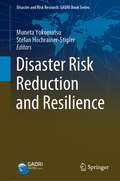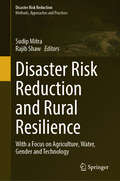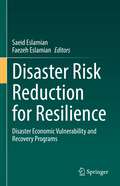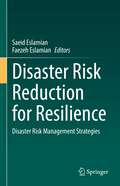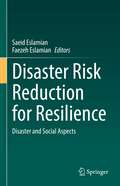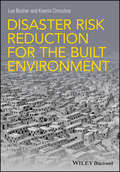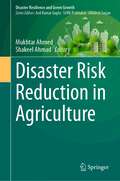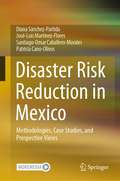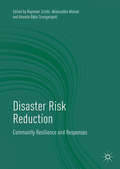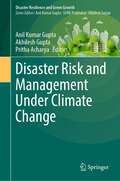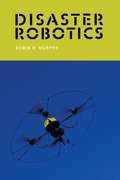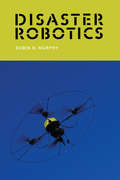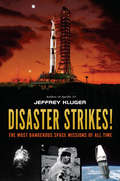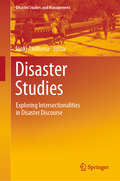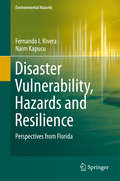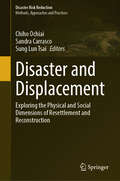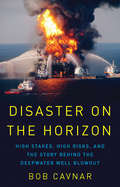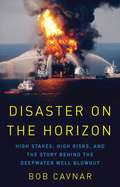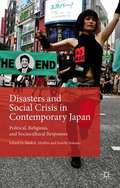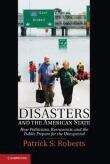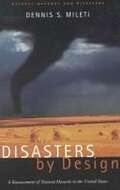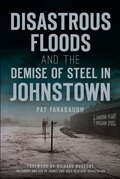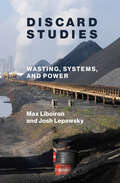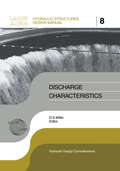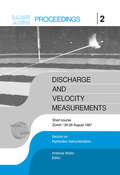- Table View
- List View
Disaster Risk Reduction and Resilience (Disaster and Risk Research: GADRI Book Series)
by Stefan Hochrainer-Stigler Muneta YokomatsuThis book provides insight on how disaster risk management can increase the resilience of society to various natural hazards. The multi-dimensionality of resilience and the various different perspectives in regards to disaster risk reduction are taken explicitly into account by providing studies and approaches on different scales and ranging from natural science based methods to social science frameworks. For all chapters, special emphasis is placed on implementation aspects and specifically in regards to the targets and priorities for action laid out in the Sendai Framework for Disaster Risk Reduction. The chapters provide also a starting point for interested readers on specific issues of resilience and therefore include extensive reference material and important future directions for research.
Disaster Risk Reduction and Rural Resilience: With a Focus on Agriculture, Water, Gender and Technology (Disaster Risk Reduction)
by Rajib Shaw Sudip MitraEven though disaster losses frequently occur in rural and agricultural areas, a substantial number of the prevailing disaster research has focused on urban areas, often failing to notice rural populations, communities, and rural development as a whole. It is critical to assess how the needs and vulnerabilities in rural communities impact the creation of resilience, especially in countries with a large rural area. For disaster managers, rural areas present opportunities and challenges different from those of their urban counterparts. Therefore, efficient disaster risk reduction is the key to sustainable rural development. Disasters can cause human and animal life loss and the damage to field crops, stored seeds, agricultural equipment and materials, supply systems (e.g., infrastructure), livelihood, and associated indigenous knowledge. Such impacts have its short-term repercussions and affect the long-term sustainability of the rural sector. Rural regions of the developing world can be remote with high concentrations of mass poverty, food insecurity, and illiteracy; hence, access to food, shelter, and communication for relief and recovery is a challenge after a disaster. In rural areas, farmers strongly rely on natural resources and have no alternative source of income or employment, making them more vulnerable to a crisis. In addition, women are of paramount importance in rural development and agricultural activities, but they are the most affected ones during any disaster. Children and able people in the rural sector are also vulnerable; however, they have not been studied well and require more attention in days to come. This book explores the above-mentioned aspects related to disaster risk reduction, preparedness, and management in rural areas. Emerging technologies and their impacts to enhance disaster resilience in the rural sector are also illustrated. Apart from the introduction, the book has four sections focusing on 1) food and agriculture, 2) water and sanitation, 3) gender and social issues, and 4) rural technology. The book is a valuable resource material for students, researchers, academicians, policymakers, and development practitioners.
Disaster Risk Reduction for Resilience: Disaster Economic Vulnerability and Recovery Programs
by Saeid Eslamian Faezeh EslamianThis book is part of a six-volume series on Disaster Risk Reduction and Resilience. The series aims to fill in gaps in theory and practice in the Sendai Framework, providing additional resources, methodologies, and communication strategies to enhance the plan for action and targets proposed by the Sendai Framework. The series will appeal to a broad range of researchers, academics, students, policy makers, and practitioners in engineering, environmental science and geography, geoscience, emergency management, finance, community adaptation, atmospheric science, and information technology.This volume focuses on the concepts of economic and development vulnerability, discussing the roles of physical, social, cultural, political, economic, technological, and development factors that contribute to disaster impacts and threat levels on vulnerable populations. This approach explores how the resilience of individuals and communities can be increased in the face of future hazard threats, and how post-disaster efforts are planned for and implemented to manage risk reduction and the potential outcomes of hazard threats. Topics addressed in the boom include disaster recovery reform and resilience, recovery, and development programs, place-based reconstruction policies, resilient and sustainable disaster relief, and recovery programs, sustainable community development, and disaster recovery and post-hazard recovery strategies.
Disaster Risk Reduction for Resilience: Disaster Risk Management Strategies
by Saeid Eslamian Faezeh EslamianThis book is part of a six-volume series on Disaster Risk Reduction and Resilience. The series aims to fill in gaps in theory and practice in the Sendai Framework, and provides additional resources, methodologies and communication strategies to enhance the plan for action and targets proposed by the Sendai Framework. The series will appeal to a broad range of researchers, academics, students, policy makers and practitioners in engineering, environmental science and geography, geoscience, emergency management, finance, community adaptation, atmospheric science and information technology. This volume offers the international guidelines and global standards for resilient disaster risk reduction and lessons learned from disasters, particularly the COVID-19 and Cholera pandemics. A resilient health system and an effective disaster risk management Index are then suggested. The book further emphasizes urban resilience strategies with local authorities, adaptation strategies for urban heat at regional, city and local scales, and lessons from community-level interventions. Also addressed are coastal erosion, displacement and resettlement strategies. Land use planning and green infrastructure are suggested as tools for natural hazards reduction. Human security in times of climate change and urban heat at regional, city and local scales is discussed for an integrated action, with case studies based in Manila, Burkina Faso, Chad, Mauritania, Niger, Senegal, Nigeria, India, Spain, and Ghana. Structure design for cascading disasters resulting from mining and flooding is presented and sustainable smart city planning using spatial data is recommended.
Disaster Risk Reduction for Resilience: Disaster and Social Aspects
by Saeid Eslamian Faezeh EslamianThis book is part of a six-volume series on Disaster Risk Reduction and Resilience. The series aims to fill in gaps in theory and practice in the Sendai Framework and provides additional resources, methodologies, and communication strategies to enhance the plan for action and targets proposed by the Sendai Framework. The series will appeal to a broad range of researchers, academics, students, policy makers, and practitioners in engineering, environmental science, geography, geoscience, emergency management, finance, community adaptation, atmospheric science and information technology.This volume provides a holistic approach to developing disaster risk reduction strategies and policies, exploring the most effective ways to integrate physical and social science aspects of hazard resilience to better inform local populations. This risk-based approach to community resilience development is used to craft a collaborative system for crisis management, and allows for the implementation of nationally determined contributions (NDCs) through social innovation and community engagement to enhance community emergency response support and preparedness. Readers will also learn about education of disaster risk reduction, human health risk assessment, gendered perspectives in disaster response, recovery, and disaster management legislation.
Disaster Risk Reduction for the Built Environment
by Ksenia Chmutina Lee BosherDisaster Risk Reduction for the Built Environment provides a multi-facetted introduction to how a wide range of risk reduction options can be mainstreamed into formal and informal construction decision making processes, so that Disaster Risk Reduction (DRR) can become part of the ‘developmental DNA’. The contents highlight the positive roles that practitioners such as civil and structural engineers, urban planners and designers, and architects (to name just a few) can undertake to ensure that disaster risk is addressed when (re)developing the built environment. The book does not set out prescriptive (‘context blind’) solutions to complex problems because such solutions can invariably generate new problems. Instead it raises awareness, and in doing so, inspires a broad range of people to consider DRR in their work or everyday practices. This highly-illustrated text book provides a broad range of examples, case studies and thinking points that can help the reader to consider how DRR approaches might be adapted for differing contexts.
Disaster Risk Reduction in Agriculture (Disaster Resilience and Green Growth)
by Mukhtar Ahmed Shakeel AhmadThis book is related to disaster risk reduction in agriculture particularly under changing climate. Climate change refers to significant, long-term changes in the global climate. There is unequivocal evidence that Earth is warming at an unprecedented rate. Human activity is the principal cause. The planets average surface temperature has risen to about 1oC since the late 19th century and most of the warming occurred in the past 40 years. The years 2016 and 2020 are tied for the warmest year on the record. Similarly, other evidence of rapid climate change includes warming of oceans, shrinking of ice sheets, retreating glaciers, decreasing snow cover, rising of sea level, declining artic sea ice, increased frequency of extreme events, ocean acidification and loss of biodiversity. Hence, climate change impacts, both extreme weather and slow-onset events, have impacted several sectors of the national economies and activities, in particular agriculture and food production, augmented by other challenges be it geopolitical, cost of finance or supply chain related, and in a time of increased food insecurity. Without CO2 fertilization, effective adaptation, and genetic improvement, each degree-Celsius increase in global mean temperature would, on average, reduce global yields of wheat by 6.0%, rice by 3.2%, maize by 7.4%, and soybean by 3.1%. Hence this book is useful as a study material to teach in the field of agriculture and climate change. The book is useful for instructors and postgraduate as well as undergraduate students involved in the study of climate change. The book also provide guidance to multiple stakeholders to design mitigation and adaptation efforts to climate change and ensure food security in the developing world.
Disaster Risk Reduction in Mexico: Methodologies, Case Studies, and Prospective Views
by Diana Sánchez-Partida José-Luis Martínez-Flores Santiago-Omar Caballero-Morales Patricia Cano-OlivosThis book recognizes Mexico's effects and challenges in a natural disaster and offers empirical risk-reduction methods in critical cases. The proposals considered here include real and detailed analysis, a set of models, frameworks, strategies, and findings in the three stages of the disaster (before–during–after).This book:describes the methodology to find secure locations for the Regional Humanitarian Response Depot;offers recommendations for the sites and creation of an Export Logistics Cluster;shows how to use available technology and information to locate volunteers in the right spotsdescribes mathematical models to help to allocate procedure of resources for restoring the affected communityand proposes actions to create resilience in the country's main economic sectors, including agriculture and industry.The processes applied at recent disasters such as the 19S earthquake and their results are used as case studies, identifying possibilities for further improvement. The book also describes new trends for Mexico due to climate change and makes suggestions for mitigating future disasters. The proposals are also replicable to other highly populated societies with similar socio-economic structures. Finally, this book is the basis for generating more innovative recommendations by researchers, graduate students, academics, professionals, and practitioners to obtain better planning and better collaboration between all the humanitarian chain actors. This book intends to be of interest as a fundamental tool for decision-makers, governments, non-governmental organizations, and enterprises.
Disaster Risk Reduction: Community Resilience and Responses
by Bupinder Zutshi Akbaruddin Ahmad Ananda Babu SrungarapatiThis book discusses the interconnected, complex and emerging risks in today’s societies and deliberates on the various aspects of disaster risk reduction strategies especially through community resilience and responses. It consists of selected papers presented at the World Congress on Disaster Management, which focused on community resilience and responses towards disaster risk reduction based on South Asian experiences, and closely examines the coordinated research activities involving all stakeholders, especially the communities at risk. Further, it narrates the experiences of disaster risk-reduction in different communities that have policy implications for mitigation of future disaster risks in the societies affected by these types of disasters. Written from the social science perspective to disasters rather than an engineering approach, the book helps development and governance institutions to prioritize disasters as a problem of development rather than being parallel to it.
Disaster Risk and Management Under Climate Change (Disaster Resilience and Green Growth)
by Anil Kumar Gupta Akhilesh Gupta Pritha AcharyaThis contributed volume is focused on SDG 3, 6, 7 ,9, 11, 15, and it covers extensive knowledge on damage and loss contexts of climate change in a developing country. India’s vast landscape with its diversity of eco-geo-physiography, socio-cultural, and developmental settings, coupled with climate change and anthropogenic factors, makes it one of the most disaster-prone countries of the world and, thus, representing almost all the disasters and extreme events associated with climate change, variability, and weather phenomenon. Besides common hazards,such as heavy rainfall, floods, drought, cyclone and heat wave, secondary and composite disasters like forest fires and disease epidemics are also covered with case studies and examples. Cross-cutting aspects like infrastructure resilience, gender and social equity concerns, legal and assessment tools, and futuristic vision have been covered well in the book. Disaster risk reduction, preparedness, and resilience as central themes of adaptation to climate change are presented through policy discussions, tools, and strategic analysis of past and recent lessons. This book is of common interest to a wider range of readers across policyplanning, academia, research, and professional practitioners having interest in adaptation, resilience building and sustainability in developing countries of the world. Though it is primarily a reference book, it can also serve as a textbook for university courses and professional trainings in climate change adaptation, disaster management, sustainability and strategic management studies.
Disaster Robotics
by Robin R. MurphyThis book offers the definitive guide to the theory and practice of disaster robotics. It can serve as an introduction for researchers and technologists, a reference for emergency managers, and a textbook in field robotics. Written by a pioneering researcher in the field who has herself participated in fifteen deployments of robots in disaster response and recovery, the book covers theory and practice, the history of the field, and specific missions. After a broad overview of rescue robotics in the context of emergency informatics, the book provides a chronological summary and formal analysis of the thirty-four documented deployments of robots to disasters that include the 2001 collapse of the World Trade Center, Hurricane Katrina, the 2010 Haiti earthquake, the Deepwater Horizon oil spill, the 2011 Japanese earthquake and tsunami, and numerous mining accidents. It then examines disaster robotics in the typical robot modalities of ground, air, and marine, addressing such topics as robot types, missions and tasks, and selection heuristics for each modality. Finally, the book discusses types of fieldwork, providing practical advice on matters that include collecting data and collaborating with emergency professionals. The field of disaster robotics has lacked a comprehensive overview. This book by a leader in the field, offering a unique combination of the theoretical and the practical, fills the gap.
Disaster Robotics (Intelligent Robotics and Autonomous Agents series)
by Robin R. MurphyA comprehensive, authoritative, and accessible reference for disaster robotics that covers theory, specific deployments, and ground, air, and marine modalities. This book offers the definitive guide to the theory and practice of disaster robotics. It can serve as an introduction for researchers and technologists, a reference for emergency managers, and a textbook in field robotics. Written by a pioneering researcher in the field who has herself participated in fifteen deployments of robots in disaster response and recovery, the book covers theory and practice, the history of the field, and specific missions. After a broad overview of rescue robotics in the context of emergency informatics, the book provides a chronological summary and formal analysis of the thirty-four documented deployments of robots to disasters that include the 2001 collapse of the World Trade Center, Hurricane Katrina, the 2010 Haiti earthquake, the Deepwater Horizon oil spill, the 2011 Japanese earthquake and tsunami, and numerous mining accidents. It then examines disaster robotics in the typical robot modalities of ground, air, and marine, addressing such topics as robot types, missions and tasks, and selection heuristics for each modality. Finally, the book discusses types of fieldwork, providing practical advice on matters that include collecting data and collaborating with emergency professionals. The field of disaster robotics has lacked a comprehensive overview. This book by a leader in the field, offering a unique combination of the theoretical and the practical, fills the gap.
Disaster Strikes!: The Most Dangerous Space Missions of All Time
by Jeffrey KlugerTwelve thrilling and terrifying space-mission failures, told by the bestselling author of Apollo 13!There are so many amazing, daring, and exciting missions to outer space that have succeeded. But for every success, there are mistakes, surprises, and flat-out failures that happen along the way. In this collection, bestselling author and award-winning journalist Jeffrey Kluger recounts twelve such disasters, telling the stories of the astronauts and the cosmonauts, the trials and the errors, the missions and the misses.With stories of missions run by both Americans and Russians during the height of the space race, complete with photos of the people and machines behind them, this book delves into the mishaps and the tragedies, small and large, that led humankind to the moon and beyond.Praise for Disaster Strikes!:* "A thrill ride punctuated with spectacular failures--but also spectacular successes." --Kirkus Reviews, starred review* "The [is] text versatile, efficiently functioning as a collection of short reads or a balanced, book-length narrative . . . Always fascinating, at times unsettling, and highly recommended for elementary and middle school collections." --SLJ, starred review"Each compelling episode is crafted as a self-standing adventure, with an opening hook and a satisfying close, making this an excellent source for readalouds for middle-school classes as well as a pleasure for independent readers." --BCCB
Disaster Studies: Exploring Intersectionalities in Disaster Discourse (Disaster Studies and Management)
by Janki AndhariaThis book covers several dimensions of disaster studies as an emerging discipline. It is the inaugural book in the series ‘Disaster Studies and Management’ and deals with questions such as “Is disaster management a field of practice, a profession, or simply a new area of study?” Exploring intersectionalities, the book also examines areas of research that could help enhance the discourse on disaster management from policy and practice perspectives, revisiting conventional event-centric approaches, which are the basis for most writings on the subject. Several case studies and comparative analyses reflect a critical reading of research and practice concerning disasters and their management. The book offers valuable insights into various subjects including the challenge of establishing inter- and multi-disciplinary teams within the academia involved in disaster studies, and sociological and anthropological readings of post-disaster memoryscapes. Each of the contributors has an enduring interest in disaster studies, thus enriching the book immensely. This book will be of interest to all the students and scholars of disaster studies and disaster management, as well as to practitioners and policymakers.
Disaster Vulnerability, Hazards and Resilience
by Naim Kapucu Fernando I. RiveraThis monograph provides valuable lessons in building disaster resilience for rural communities and beyond. With a focus on Florida, the authors present a comprehensive review of the current debates surrounding the study of resilience, from federal frameworks, state plans and local initiatives. They also review evaluation tools and feature first-hand accounts of county emergency managers as well as non-profit and community groups on key issues, including perspectives on vulnerable groups such as the elderly, children and farm workers. Readers will find insightful answers to such questions as: How can the concept of resilience be used as a framework to investigate the conditions that lead to stronger, more sustainable communities? What factors account for the variation across jurisdictions and geographic units in the ability to respond to and recover from a disaster? How does the recovery process impact the social, political and economic institutions of the stricken communities? How do communities, especially rural ones, collaborate with multiple stakeholders (local, regional, state, national) during the transition from recovery to resilience? Can the collaborative nature of disaster recovery help build resilient communities'. The primary audiences of this book are scholars in emergency and crisis management, planning and policy, disaster response and recovery, disaster sociology and environmental management and policy. This book can also be used as a textbook in graduate and advanced undergraduate programs / courses on disaster management, disaster studies, emergency and crisis management, environmental policy and management and public policy and administration.
Disaster and Displacement: Exploring the Physical and Social Dimensions of Resettlement and Reconstruction (Disaster Risk Reduction)
by Chiho Ochiai Sandra Carrasco Sung Lun TsaiAcknowledging the multidimensional nature of disasters&’ impacts and subsequent recovery pathways as well as the central role of communities&’ agency, this book introduces and discusses the political, architectural and social dimensions of disaster-induced displacement and reconstruction in the long-term view. The impact of disasters on cities and housing worldwide is expected to be magnified by climate change, threatening to displace people temporarily or permanently, with cascading impacts at individual and collective levels. However, several issues are still unexplored, such as validating survivors&’ agency for their recovery. The book covers diverse international case studies using qualitative and quantitative research methods and a mix of both to document varied recovery pathways. The book is also enriched with studies addressing displacement in the context of armed conflict and other highly relevant circumstances affecting development. The discussions in this book provide insights for appropriate recovery initiatives, acknowledging the role of housing as the bedrock of durable and sustainable recovery and fostering the creation of safer building environments through the &“build back safer&” ethos for building resilient communities. The lessons from this book provide evidence to improve disaster planning and assistance, which is greatly pertinent for governments, humanitarian agencies, domestic and international NGOs, practitioners and academicians.
Disaster on the Horizon
by Bob CavnarDisaster on the Horizon is a behind-the-scenes investigative look at the worst oil well accident in US history, which led to the current environmental and economic catastrophe on the Gulf Coast. Cavnar uses his 30 years in the business to take readers inside the disaster, exposing the decisions leading up to the blowout and the immediate aftermath. It will also provide a layman's look at the industry, its technology, people, and risks. It will deconstruct events and decisions made by BP, Transocean, and the US Government before and after the disaster, and the effects of those decisions, both good and bad. Cavnar explains what happened in the Gulf, explores how we arrived at deep water drilling in the first place and then charts a course for how to avoid these disasters in the future.
Disaster on the Horizon: What Happened and Why
by Bob CavnarWhat Really Happened Out in the Gulf? The Deepwater Horizon blowout dominated the world's attention for months, yet Americans still lack an understanding of the greatest environmental disaster in U. S. history. Disaster on the Horizon is the first comprehensive book on the causes of the disaster by expert Bob Cavnar. He delivers a hard-hitting portrait of industry and government woefully unprepared to respond. From inside the oil business - field hand to CEO - Cavnar witnessed the carelessness of the industry first hand when he was burned by a gas well fire in 1981. Disaster on the Horizon reveals explosive details: Collusion between BP and the government to hide the severity of the spill. The blowout preventer technology details - why it failed. The behind-the-scenes story of the Obama administration's $20 billion deal with BP. How BP blamed others for their mistakes. BP's corner cutting on safety. The risky top kill procedure. Obama's failure to take advice from industry experts. Disaster on the Horizon provides a roadmap for ensuring this never happens again. Cavnar calls out his own industry for ignoring safety improvements and lobbying to end the moratorium on off-shore drilling as quickly as possible. Cavnar's takeaways: Technology must be vastly improved before deepwater drilling resumes. The industry had a chance to get started on this during the moratorium, but delayed and lobbied instead. Tougher regulations on deepwater drilling should be enacted in technology, disaster preparedness, and response operations. A comprehensive energy policy that creates a favorable environment for full-scale alternative energy development and conservation.
Disasters and Social Crisis in Contemporary Japan: Political, Religious, And Sociocultural Responses
by Koichi Nakano Mark MullinsJapan was shaken by the 'double disaster' of earthquake and sarin gas attack in 1995, and in 2011 it was hit once again by the 'triple disaster' of earthquake, tsunami, and nuclear meltdown. This international, multi-disciplinary group of scholars examines the state and societal responses to the disasters and social crisis.
Disasters and the American State
by Patrick S. RobertsDisasters and the American State offers a thesis about the trajectory of federal government involvement in preparing for disaster shaped by contingent events. Politicians and bureaucrats claim credit for the government's successes in preparing for and responding to disaster, and they are also blamed for failures outside of government's control. New interventions have created precedents and established organizations and administrative cultures that accumulated over time and produced a general trend in which citizens, politicians and bureaucrats expect the government to provide more security from more kinds of disasters. The trend reached its peak when the Federal Emergency Management Agency adopted the idea of preparing for 'all hazards' as its mantra. Despite the rhetoric, however, the federal government's increasingly bold claims and heightened public expectations are disproportionate to the ability of the federal government to prevent or reduce the damage caused by disaster.
Disasters by Design: A Reassessment of Natural Hazards in the United States
by Dennis S. MiletiDisasters by Design provides an alternative and sustainable way to view, study, and manage hazards in the United States that would result in disaster-resilient communities, higher environmental quality, inter- and intragenerational equity, economic sustainability, and improved quality of life. This volume provides an overview of what is known about natural hazards, disasters, recovery, and mitigation, how research findings have been translated into policies and programs; and a sustainable hazard mitigation research agenda. Also provided is an examination of past disaster losses and hazards management over the past 20 years, including factors--demographic, climate, social--that influence loss. This volume summarizes and sets the stage for the more detailed books in the series.
Disastrous Floods and the Demise of Steel in Johnstown (Disaster)
by Pat FarabaughJohnstown is synonymous with floodwaters and steel. When the city was decimated by a flood of biblical proportions in 1889, it was considered one of the worst natural disasters in American history and gained global attention. Sadly, that deluge was only the first of three major floods to claim lives and wreak havoc in the region. The destruction in the wake of the St. Patrick's Day flood in 1936 was the impetus for groundbreaking federal and local flood control measures. Multiple dam failures, including the Laurel Run Dam in July 1977, left a flooded Johnstown with a failing steel industry in ruins. Author Pat Farabaugh charts the harrowing history of Johnstown's great floods and the effects on its economic lifeblood.
Discard Studies: Wasting, Systems, and Power
by Josh Lepawsky Max LiboironAn argument that social, political, and economic systems maintain power by discarding certain people, places, and things.Discard studies is an emerging field that looks at waste and wasting broadly construed. Rather than focusing on waste and trash as the primary objects of study, discard studies looks at wider systems of waste and wasting to explore how some materials, practices, regions, and people are valued or devalued, becoming dominant or disposable. In this book, Max Liboiron and Josh Lepawsky argue that social, political, and economic systems maintain power by discarding certain people, places, and things. They show how the theories and methods of discard studies can be applied in a variety of cases, many of which do not involve waste, trash, or pollution. Liboiron and Lepawsky consider the partiality of knowledge and offer a theory of scale, exploring the myth that most waste is municipal solid waste produced by consumers; discuss peripheries, centers, and power, using content moderation as an example of how dominant systems find ways to discard; and use theories of difference to show that universalism, stereotypes, and inclusion all have politics of discard and even purification—as exemplified in &“inclusive&” efforts to broaden the Black Lives Matter movement. Finally, they develop a theory of change by considering &“wasting well,&” outlining techniques, methods, and propositions for a justice-oriented discard studies that keeps power in view.
Discharge Characteristics: IAHR Hydraulic Structures Design Manuals 8 (Iahr Design Manual Ser. #8)
by D. S. MillerThis manual provides the procedures and data necessary to calculate discharges over and through hydraulic structures. Contents: Introduction; Discharge measurement structures; Discharge relationships and component head losses for hydraulic structures; Headlosses in closed conduit systems flowing full; Analysis of flow conditions and hydraulic design for river diversion in closed conduits; Flow through and over rockfill structures
Discharge and Velocity Measurements: Proceedings of a short course, Zürich, 26-27 August 1987
by Andreas MüllerPapers of the short course on Discharge and Velocity Measurements, Zurich, Aug. 1987 on discharge measurement and calibration, point measures of velocity, measurement of velocity fields, and needed developments.
